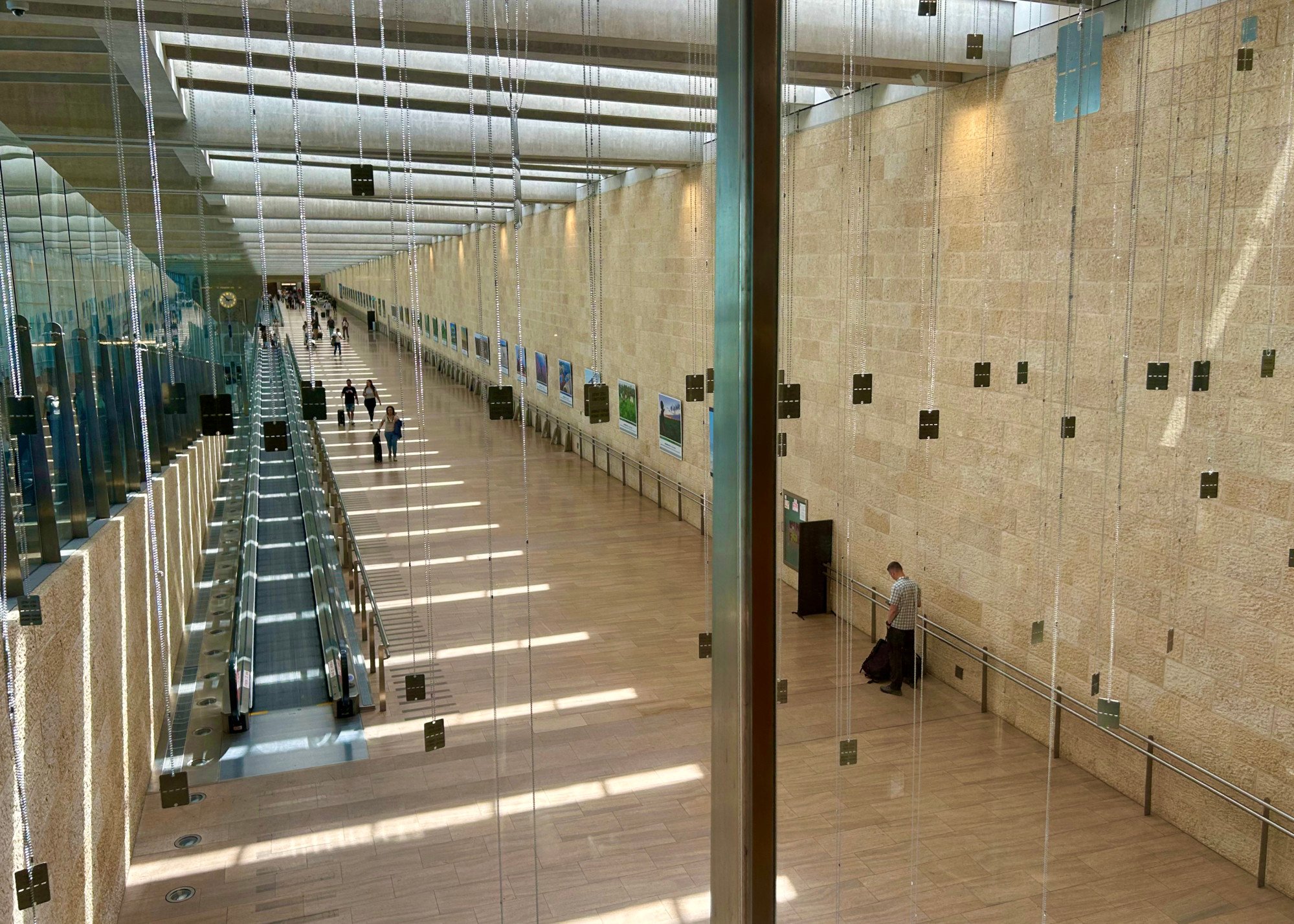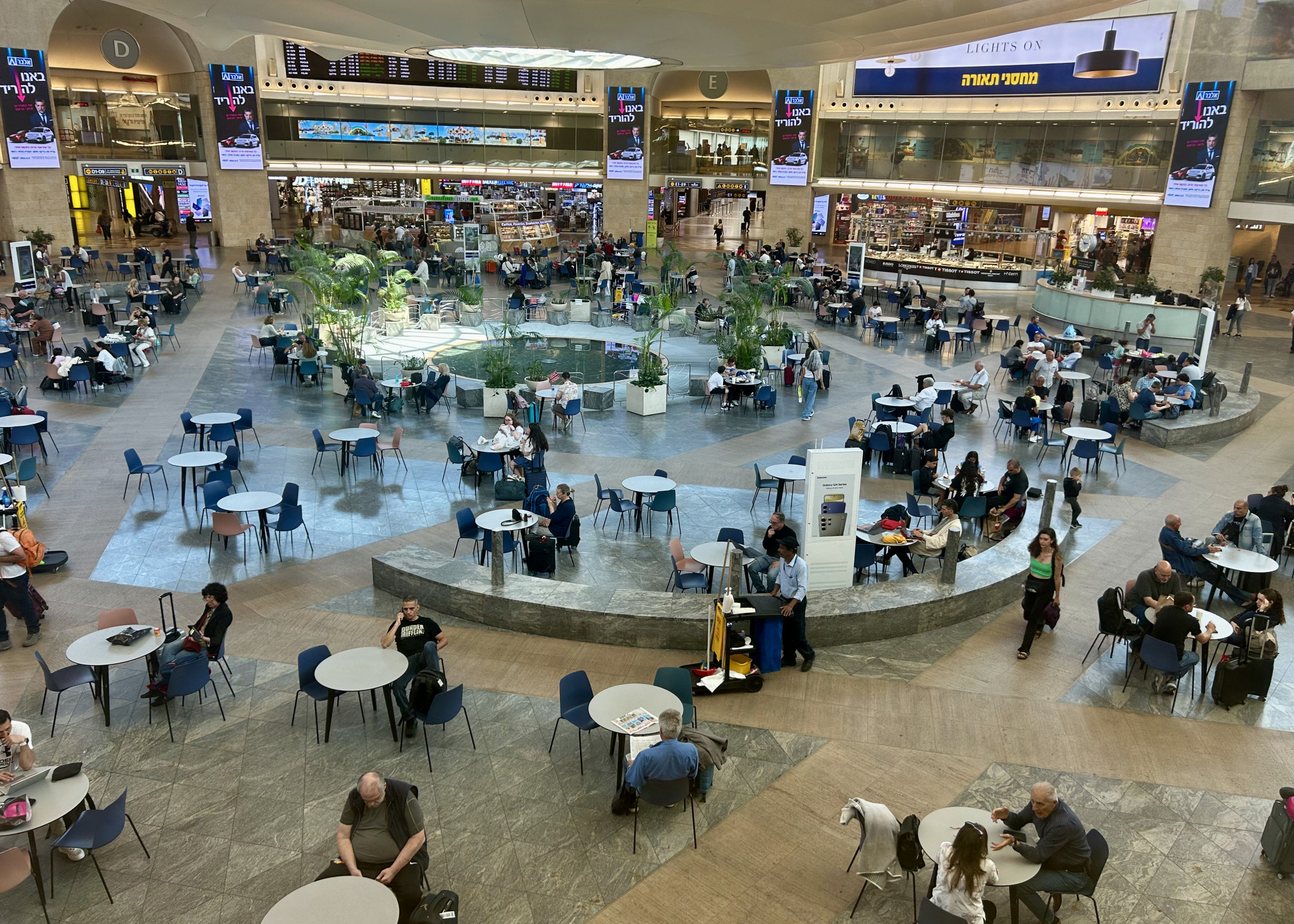
What a flight to Israel as a tourist is like during the war with Hamas, on as cheap a ticket as possible
- Despite the ongoing Israel-Gaza war, Ben Gurion, Israel’s main international airport, which lies around 60km from Gaza, continues to function almost as normal
- Our correspondent got a small taste of the frustrations and cost blowouts caused by the constrained supply of flights when he travelled to Israel this month
Israel has been at war since October 7, when Hamas gunmen crossed the border from Gaza and attacked military targets and civilian communities. As many as 1,200 people were killed during the attack and 240 more were abducted by Hamas.
Hamas has launched thousands of projectiles at Israel since, while Israel has dropped tens of thousands of bombs on Gaza. And yet, with the exception of a seven-hour window on April 13, when Iran fired 185 “suicide drones”, 36 cruise missiles and at least 110 ballistic missiles at Israel, the country’s airspace has remained almost entirely open.
Every day, civilian aircraft fly in and out of Ben Gurion, Israel’s main international airport, which lies less than 60km (37 miles) from Gaza, without incident. How exactly the Israelis have pulled it off will be studied by aviation safety experts for years to come and has become a topic of curiosity for frequent fliers.
The answer lies in part with Israel’s Iron Dome air-defence system, which has a success rate of more than 90 per cent for destroying projectiles up to 70km away.

Combined with the Arrow, Arrow 2.0 (which works against exo-atmospheric missiles), David’s Sling and Patriot air-defence systems, as well as fighter aircraft and attack helicopters used to shoot down drones, it makes Israel’s airspace one of the best defended in the world.
But that is just the hardware. The rest has involved a finely coordinated strategy put into play by civilian and military air traffic controllers since the beginning of the war.
The first of these measures was tactical airspace closures.
“We regularly closed our airspace for periods of 10 to 40 minutes, during which time planes simply stayed a little longer in the air,” says Libby Bahat, head of the aerial infrastructure department at Israel’s Civil Aviation Authority. “[This] wasn’t a problem because we had already notified airlines to carry extra fuel to hold in the air for up to 40 minutes.
“This may sound alarming but airports and aviation authorities all over the world employ tactical closures of airspace whenever there are short-term limitations in an airport.
“This could be because there are objects on the runway, an aircraft has become stuck on the runway, or extreme weather like heavy fog, rain or snow.”

Another measure, employed until January 29, saw the maximum number of aircraft waiting at gates reduced from 10 to an average of four. This allowed pilots to take off more quickly and prevented queuing on the runways.
Incoming flights were diverted so they looped around northern Israel, further away from Gaza. Meanwhile, the Israeli Air Force scrambled GPS signals over the north of the country to confuse the drones and guided anti-tank missiles that are regularly fired from Lebanon, another front in the war.
“We published notices to pilots to prepare for GPS jamming, which posed a very low ‘added risk’ because modern aircraft have many other navigation tools that are quite effective,” Bahat says.
“This strategy is not unusual. Pilots working in Nordic countries, Central Europe and Eastern Europe, anywhere near the war in Ukraine, might see the same warnings.
“We are already seven months into a war and past the worst stage, when hundreds of missiles were aimed at us every day. Now, as no rockets are being fired to the central part of Israel [the last time a long-range missile was fired from Gaza over central Israel, where Ben Gurion is found, was on January 31], even that negligible risk has diminished.”

That said, it has not been plain sailing for people flying in. I got a small taste of the frustrations and cost blowouts when I travelled to Israel this month.
My journey began in Singapore with a 12-hour flight to the Greek capital, Athens, followed by a two-hour flight to Ben Gurion.
Before the war, seven airlines serviced this route. Six have resumed limited services but the seventh, Ryanair, says it cannot do so until Ben Gurion reopens Terminal 1, which was closed after the war broke out due to low passenger traffic. Terminal 1 is dedicated to low-cost airlines and carries an airport tax of only US$11 per person compared with US$30 per person at Terminals 2 and 3.
The constrained supply extends to many airlines that have flown into Ben Gurion. When British Airways suspended all service into Israel on October 11 – following the return of one of its flights to London when it was only minutes away from landing, after an air-raid siren sounded at Ben Gurion – 90 per cent of the 60-something carriers that normally fly into the country emulated the move. (Just three days earlier, on October 8, a Hamas rocket had landed near Ben Gurion, sending passengers inside the airport scrambling under tables.)
A number of airlines have since reinstated varying levels of service, including British Airways, but others have not.

Combined with a massive drop in tourism – only 206,700 visitors entered Israel from January to March, compared with 966,200 during the same period in 2023 – the constrained supply has seen the cost of flying to Israel skyrocket.
Israel’s national carrier, El Al, considered the most secure airline in the world for its fastidious security procedures – and because it is the only commercial carrier in the world that equips its planes with interceptor missile-defence systems – wanted US$668 for the two-hour flight from Athens.
What’s known as “war pricing” has caught a lot of people by surprise. An Israeli friend who was in Poland on October 7 and who, like many of her compatriots, flew home on the first day of the war, had to fork out US$900 for a flight to Ben Gurion via Athens with El Al.
I spent days surfing the websites of airlines and travel agents to find a better deal. I thought I had got lucky when I found a ticket with Israeli low-cost airline Arkia for US$170 on European online travel agent eDreams.
I had expected to be grilled at immigration about the purpose of my visit … but after stuffing my biometric passport into the scanner I was waved through
I booked, but the following morning received an email telling me there was a problem with my credit card. I booked again with a different card, but the same thing happened. When contacted, eDreams said the problem actually lay with the airline, which could not confirm the flight.
I was about to give up and book a seat with El Al when a new flight appeared on the website. Greek low-cost airline Bluebird was offering a flight for only US$145; it was nearly three times the advertised pre-war starting price of US$49, yet I was over the moon.
When I checked in at Athens airport, I started to understand why the flight was relatively cheap. There would be a stopover at the Greek island of Rhodes – something I was hitherto unaware of – which doubled the flight time to four hours.
After passing the gate, the 100-odd Bluebird passengers were dumped by a bus on the baking hot tarmac and made to wait for half an hour before we boarded a Boeing 737-800 that wasn’t in the best condition.


Many of the seats were discoloured and torn, and none reclined. They had been locked into the upright position so Bluebird could stuff more seats into the fuselage.
About 90 per cent of passengers were Israelis, including a group of loud, ultrareligious Hasidic Jews in top hats and long back coats. The rest were made up of Arab-Israelis and a handful of tourists, including an American couple who were returning after a side trip to Athens as part of a month-long stay in Israel.
They told me their original flight to Israel had taken off from Los Angeles only minutes after Israeli airspace had reopened after the Iranian attack: “We didn’t know if we were going to fly. It was touch and go for a moment.”
In Rhodes, the thud on touchdown was so hard and loud, I thought the front wheel was going to snap off. The landing in Israel was a lot smoother.

Ben Gurion’s interior design is impressive, with vast, cavernous concourses and natural rock facades. And being a Friday afternoon, only hours before the start of the Jewish sabbath, when Israelis tend to return home, the airport was buzzing with people.
The experience was no different to landing in any other modern airport – until I passed a moving walkway lined with posters bearing the faces and names of the 130-or-so hostages taken on October 7 who are yet to be released.
I had expected to be grilled at immigration about the purpose of my visit. I had heard that even Israeli passport holders were being interviewed on arrival for up to half an hour over fears Islamist terrorists based in Europe were trying to enter Ben Gurion on fake travel documents.
But after stuffing my biometric passport into the scanner I was waved through.
The same thing happened at customs. An Israeli with inside knowledge later explained that my speedy exit was not due to racial profiling, as I had assumed, but because biometric passports are significantly harder to copy – and store much more information – than older analogue documents.

From the airport, I caught a clean, modern train to the coastal city of Herzliya and an hour later, I was dipping my feet in the Mediterranean Sea.

